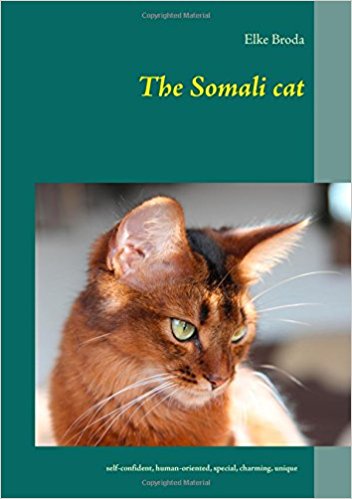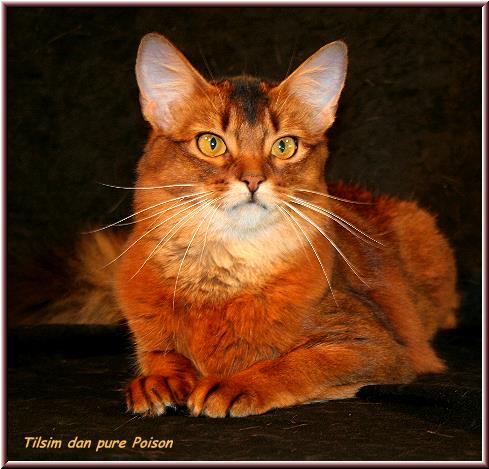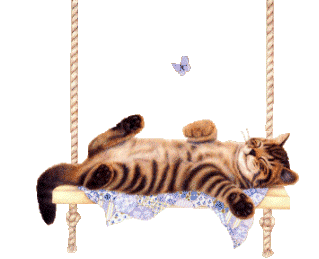|
|
|
The Somali
cat
Production and publishing house:
Books on Demand GmbH, Norderstedt
ISBN 9783476094083
Author: Elke Broda
144 sites - 16,99€
First edition 02/2018
|
|
 |
|
|
|
After I
have been asked again and again by Somali lovers if there
are newer, breed-related readings.
I decided to write my own book.
In this book you will find information about the history,
posture, nutrition, curiosities and much more
around the Somali cats and many photos.
I hope you enjoy reading!
|
|
|
|
Here are a
few reading samples:
Ancestry /
Origin
That the
Somali originates from the Abyssinian is no secret, at least
not anymore. This was different at the beginning
since the Abyssinian was considered to be a purebred for
short hair. Obviously more than one story circulates about
the evolutionary history of the Somali, but probably no one
will ever know which one to be true.
|
Personality & Behaviour
The Somali is highly intelligent, full of sprits, lively,
bubbly, amazingly playful, teachable, intensely affectionate
to her people and compliant. She is a mixture of
breath-taking beauty, elegance and personality. She is
self-confident and
sensitive and knows exactly what she wants and will apply
all her charm to get
just that. You will never get bored with a Somali!
|
|
Colours
At first
there were only ruddy coloured Somalis. But soon also red
was accepted and then chocolate, blue, lilac and
fawn appeared and also variations of silver followed.
Especially in UK there are many variations of colours to be
found.
COAT COLOR:
warm and glowing. Ticking: distinct and even, with dark
coloured bands contrasting with lighter coloured
bands on the hair shafts. Undercoat colour clear and bright
to the skin. Deeper colour shades desired, however,
intensity of ticking not to be
sacrificed for depth of colour. Preference given to cats
UNMARKED on the undersides, chest, and legs; tail without
rings. Markings: darker
shading along spine continuing through tip of tail; darker
shading up the hocks, shading allowed at the point of the
elbow; dark lines
extending from eyes and brows, cheekbone shading, dots and shading on
whisker pads are desirable enhancements, eyes...
|
|
Exhibitions
/ Cat Shows
very first
cat exhibition was held as early as 1598 in England
(Winchester)! Later on, in 1871, an exhibition was held at
the Crystal Palace in London. From there on, cat
exhibitionwith the standards as known today, were slowly
developed. Standards are a
yardstick by which the breeder may measure his advances
toward a perfect feline. At the show hall speciallytrained
judges will rule according to these
guideline when seeking for the cat coming closest to the
requested standard of a breed.
|
|
Tomcat
(male) or Queen (female)
Some humans
prefer male cats to female cats or the other way around. As
breeder you become familiar with both genders and
you always discover that they are different every time.
Tomcats are often cuddlier, more relaxed and sometimes even
appear a bit gawky.
Queens are supposed to be touchy and bitchy, but from
experience - this is something we cannot confirm. There are
very balanced creatures in both genders.
Between the 6 and 9 month of age a tomcat will notice a
female cat.
|
|
Who takes
Care during your Vacation?
This is an
important issue to ponder upon before even thinking about
buying a cat. The optimal solution for a cat is if she can
remain in her usual environment and a familiar trustworthy
person would live with her while you are away.
But since this very often proves to be a difficult task to
achieve, maybe you have a family member,
a close friend or a neighbour who is willing to take care of
your cat while you are on holiday.
|
|
Pregnancy
and Birth
On average,
cats are pregnant for 63 to 70 days. Most cats behave “as
usual” during pregnancy, but it varies from cat to cat.
Some sleep very much, others are instantly more affectionate
and some even get a bit bitchy.
1 - 5 days
before giving birth, your queen’s abdomen may “drop” a bit
due to false labour pain.
When the cat’s neck of the womb starts to open up, you may
see a clot of slime
coming out, but sometimes this goes unnoticed as the clot of
slime comes along while the kittens are delivered.
|
|
The old
Somali
Typically
cats do not age slowly, but almost overnight. Suddenly their
paces get slower and stiffer. Their fur also
needs a bit more help with grooming from human hand. The
location of their sleeping place is suddenly not found as
high up as before.
If the springiness of your Somali is reduced, you can help
her reaching the window sill by
setting up a small ladder, a small staircase or podium.
Maybe also the cat tree needs a little rebuilding to make
access a bit easier.
|
|
Feeding
B.A.R.F.
Let’s
assume wild living cats. They almost exclusively feed on
prey animals they caught themselves. Mostly this will be
mice,
birds and insects, which all have an approx. 70% moisture
content. That is the reason, why wild living cats do not
need much drinking water. The moisture content in dried food
is 7 -10%, in canned food
and prey animals approx. 70 – 75%.
The meat we
can feed our cats is exsanguinated (bleed out) and therefore
does not contain enough moisture,
almost no blood and above all - not enough mineral compound
and iron. Years back, cat were fed more natural and
there was no convenient cat food available. Also most cats
were free to go outside and prey.
|
|
Home
stories
Our Charly
Charly is
an Abyssinian Variant, a huge, beautiful and intelligent
tomcat. We had a big terrarium with 6 female gerbils in our
living room, posing as “cat television”. The gerbils were
not afraid of the cats; they even came close to the window
to get a better
look at the cats. Our Charly absolutely loved to play with
fur toy mice and the reason for us, to not having any fur
toy mice in our household was,
that Charly absolutely refused to share this toy with the
other cats and always got very angry
when they also wanted to play with them.

 |
|
|
home
|
|